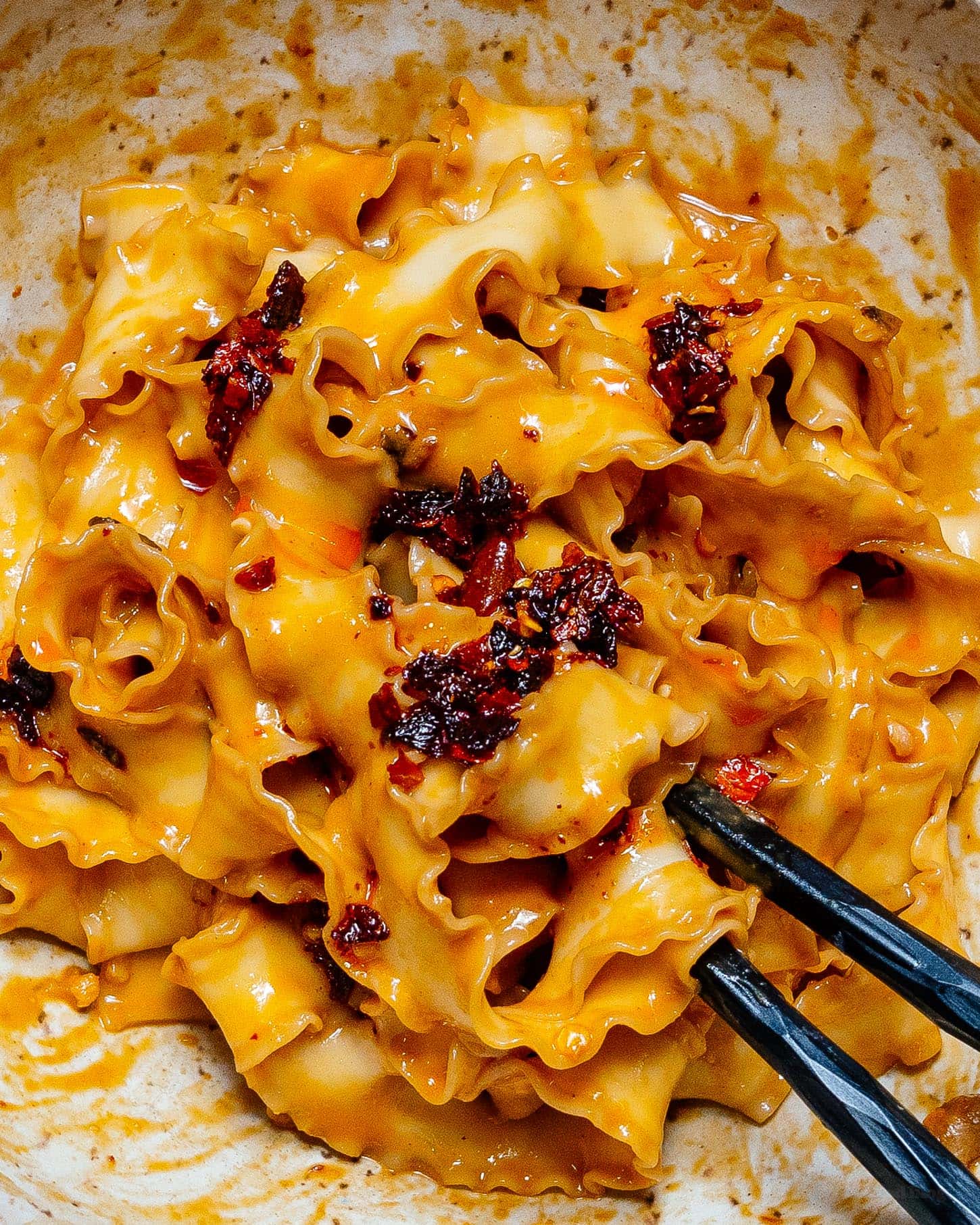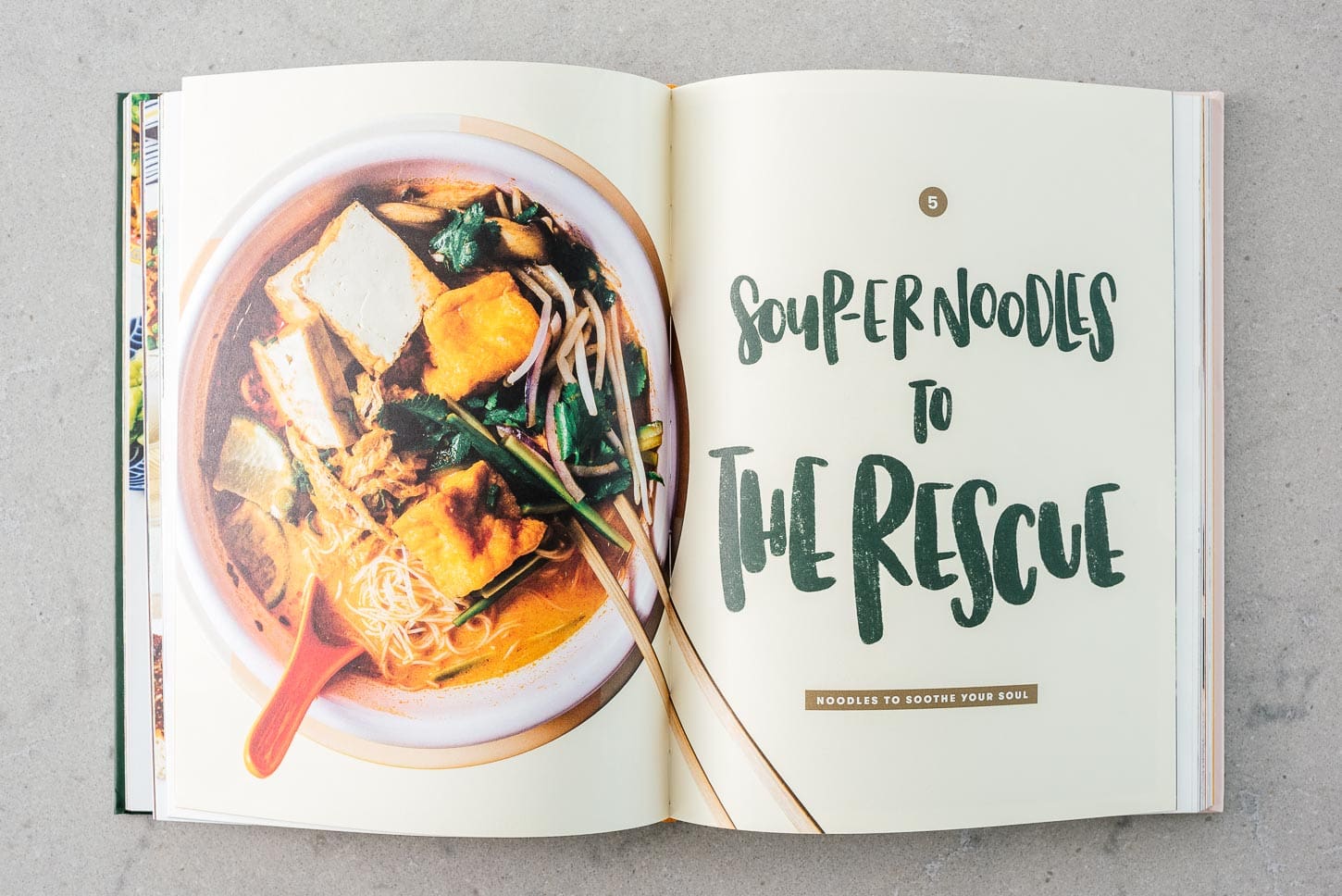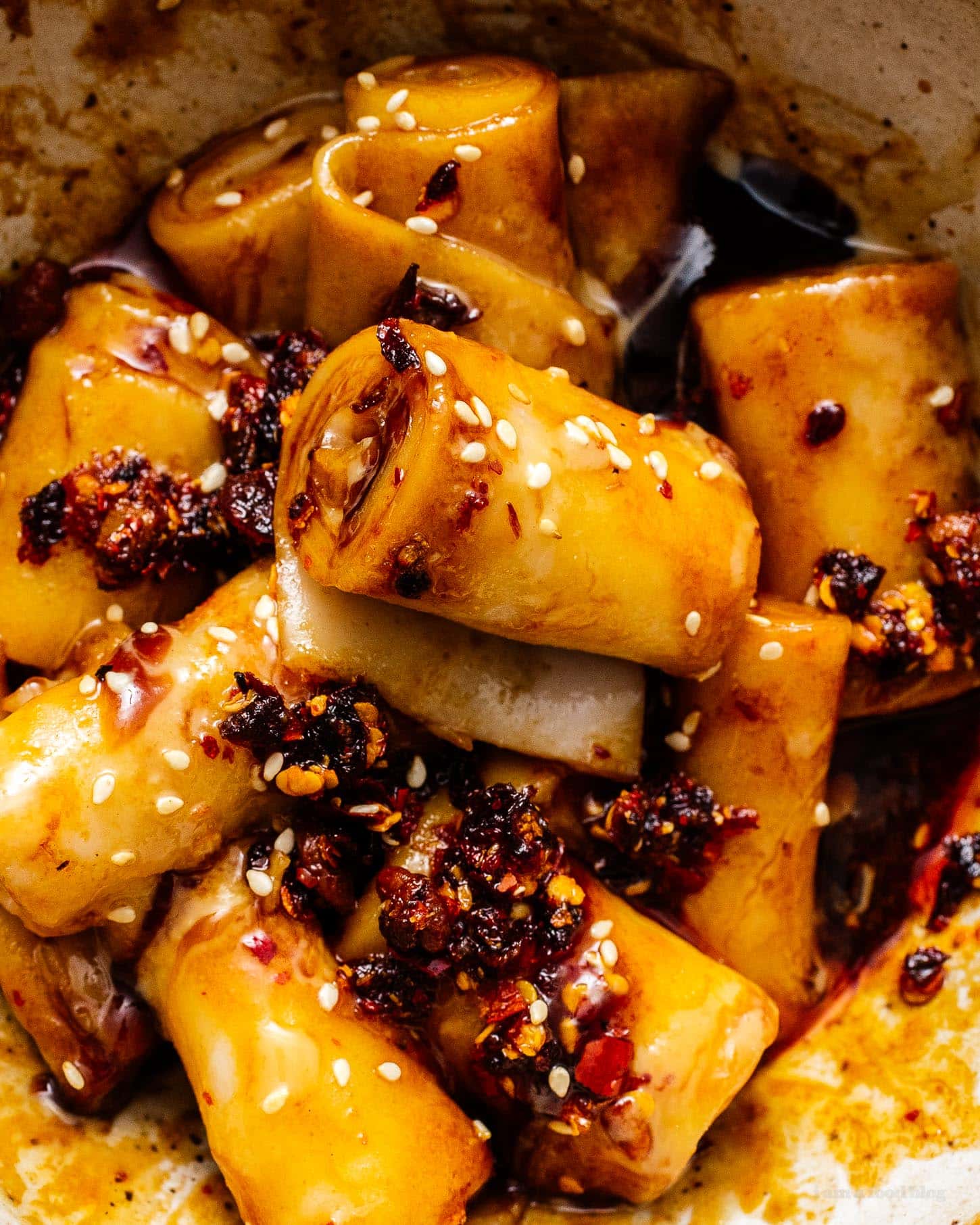
Cheung fun, aka rice noodle rolls are a classic dim sum favorite but did you know you can make them right at home?!
When I was a kid we went to dim sum every single Sunday. My favorite thing, always and forever will be rice noodle rolls. We would get an entire order just for me and even when I was small, I could finish the entire dish. I mean, I can still finish the entire dish but it’s not as impressive as an adult is it? Dim sum Sundays is still a thing for Mike and I, and of course we always, always order rice noodle rolls.
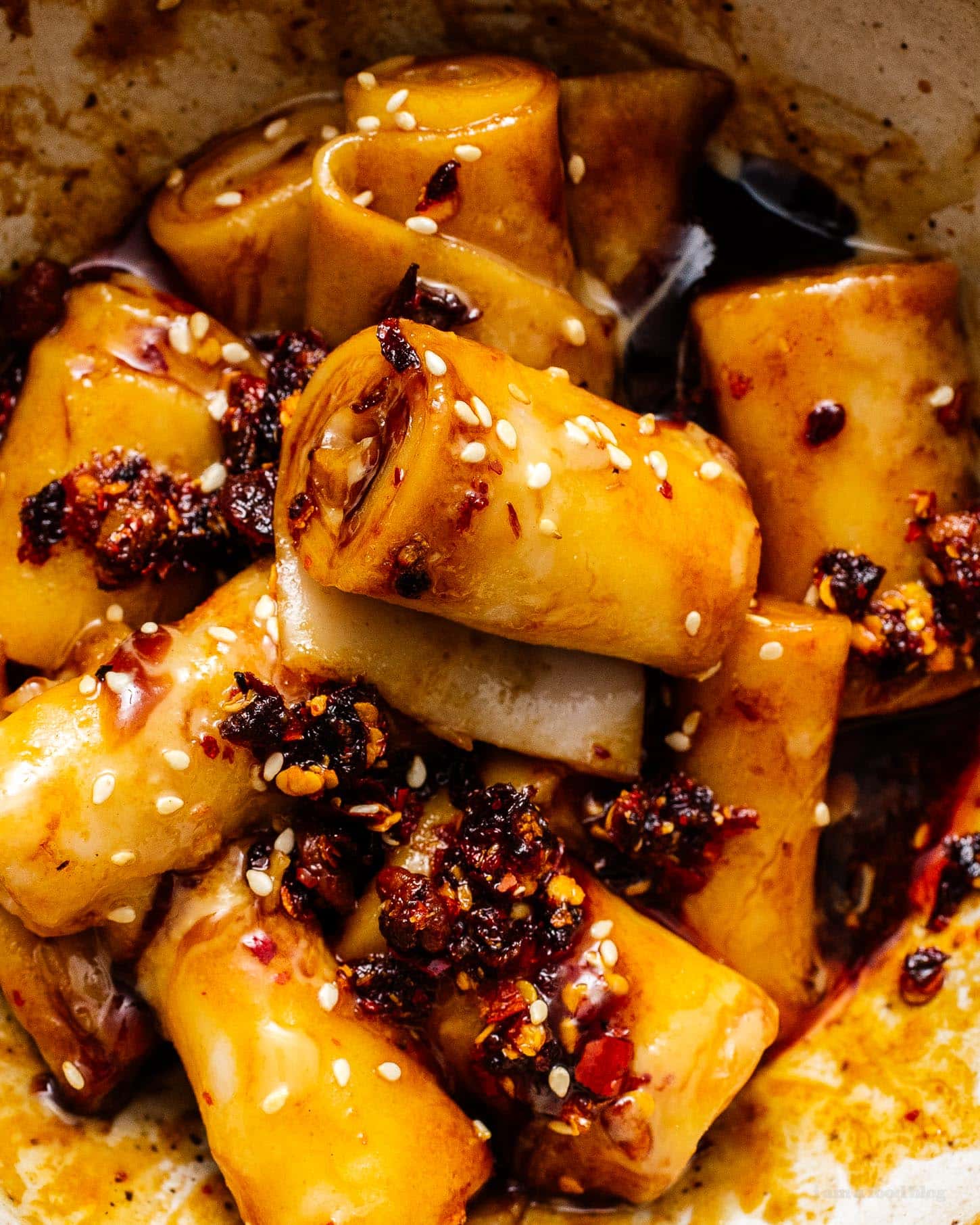
I love them plain, I love them stuffed with shrimp, I love them bursting with beef, I love them packed with pork, and I love them chock-full of chinese donuts. I freaking love rice noodle rolls.
What is cheung fun?
Rice noodle rolls, or Cheung Fun 腸粉, are a Chinese, Cantonese specifically, thin wide rice noodle that’s rolled up. They can be served filled with shrimp, beef, or other ingredients and also rolled up and served plain. Rice noodle rolls are served as a snack, small meal, or part of dim sum. They’re super popular in Hong Kong and all over the world. Rice noodle rolls are pure comfort food. If you’ve ever had dim sum, you’ve probably had rice noodle rolls. Rice noodle rolls are also the same as the rice noodles in chow fun, just cut up into noodles, instead of being rolled.
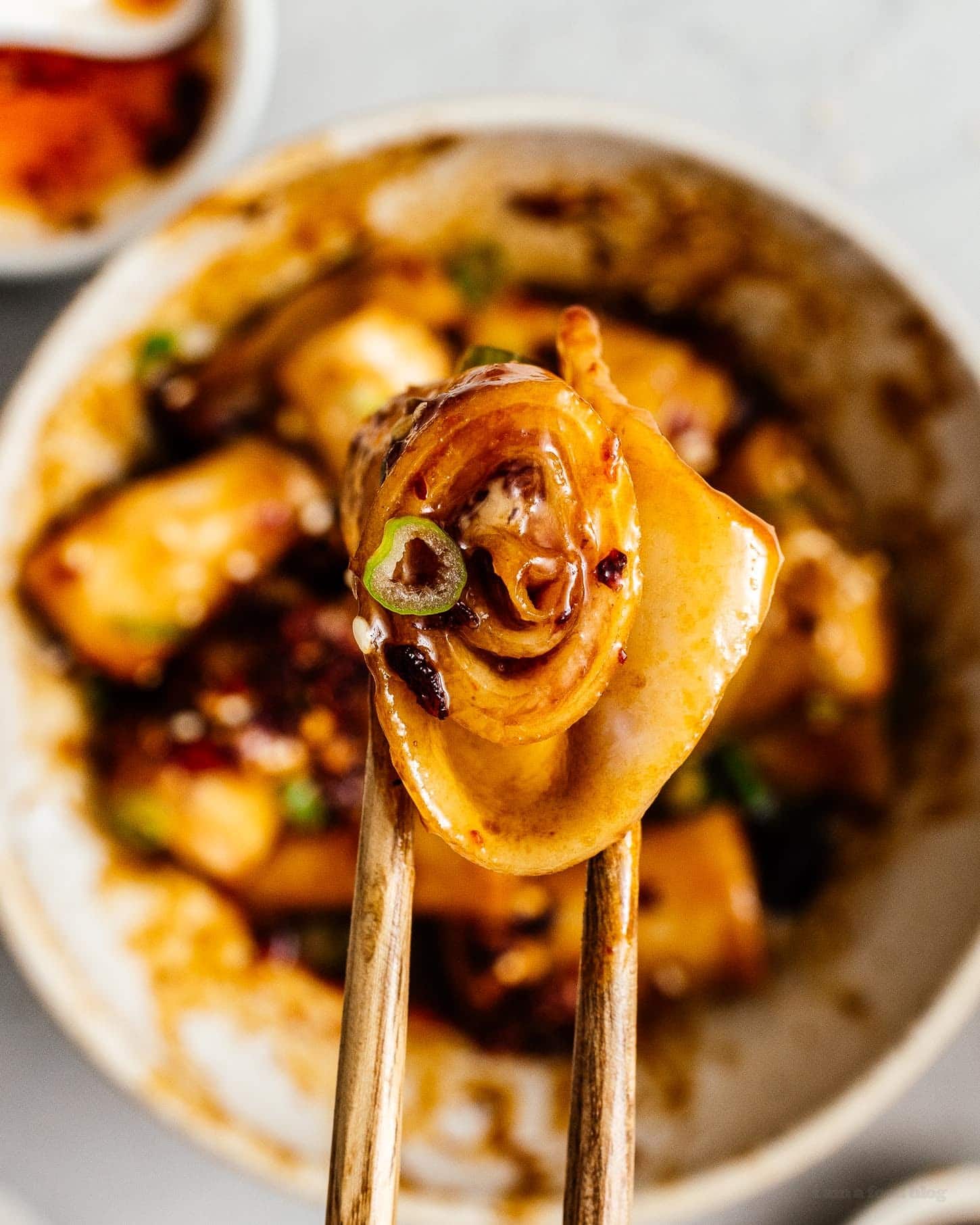
What does cheung fun taste like?
Rice noodle rolls taste like rice because that’s what they’re made out of. They’re mild and neutral and really take on the flavor of the sauce or seasoning you pair them with. Rice noodle rolls are all about the texture: soft and slippery, chewy with a little bit of bounce.
The best flour for rice noodle rolls
Rice flour makes up the majority of the rice noodle batter, but a little bit of cornstarch or tapioca starch is added for structure and texture.
For rice flour, I always use Erawan Elephant brand, the kind in a clear bag with red lettering on it.
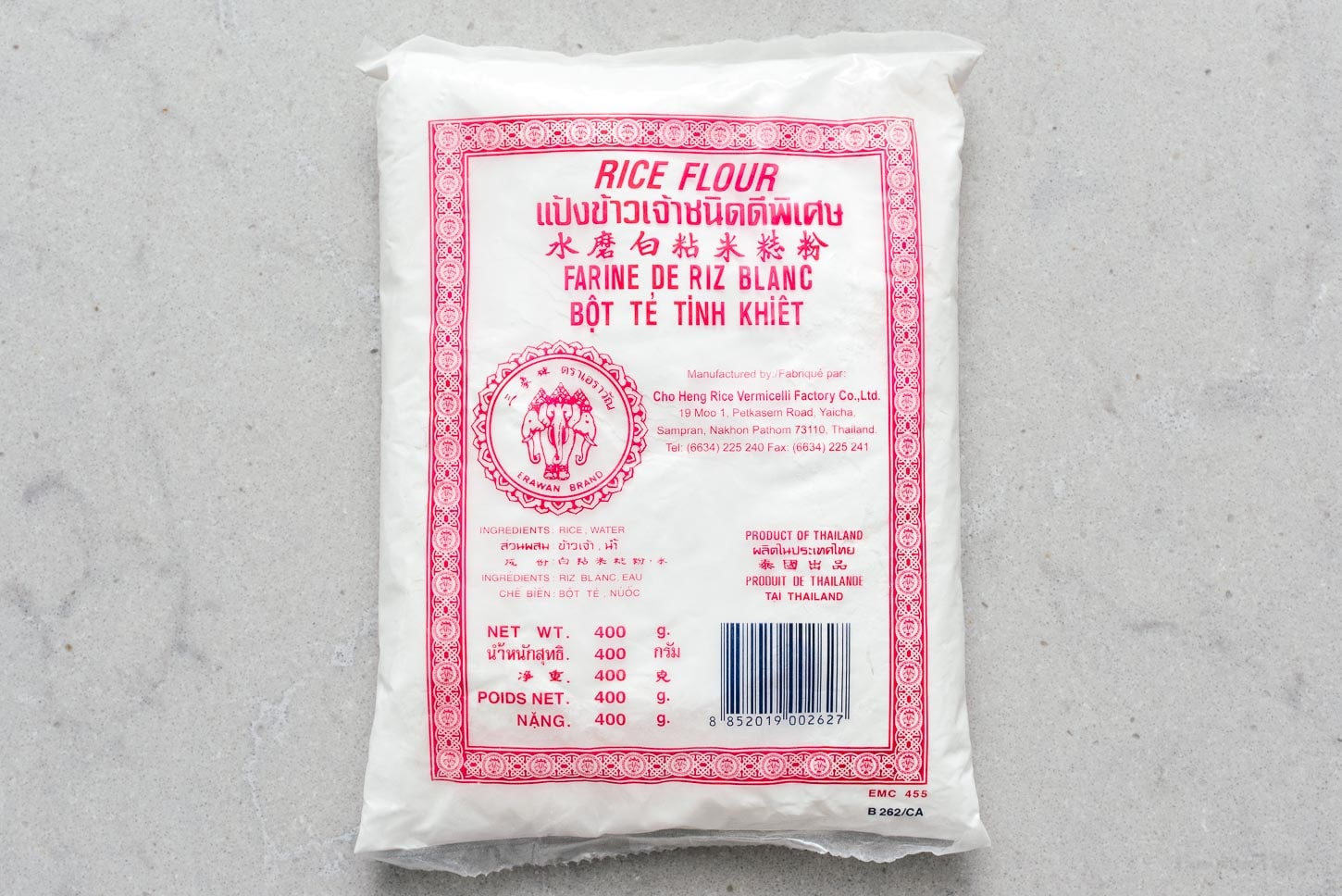
As for using cornstarch or tapioca starch, that can be up to you! I tested out three different combinations:
Cornstarch + rice flour = soft and chewy with a bit of chewy bounce
Tapioca starch + rice flour = tender and soft, but not as chewy
Cornstarch + tapioca starch + rice flour = somewhere in the middle
I liked the rice flour and cornstarch combo best but Mike liked the rice flour and tapioca best. Strangely enough, rice flour plus cornstarch and tapioca was the least favored of the three.
How to make rice noodle rolls (or rice noodles!)
- Mix. In a large bowl, whisk together the rice flour, cornstarch and salt. Whisk in the water and oil until you have a smooth batter.
- Steam. Bring 1-2 inches of water up to a boil in wok or large sauté pan and place a steaming rack in the center of your wok. Lightly brush a non-stick square pan with oil. Give the batter a whisk then add 1/4 cup batter to the pan. Shake the pan to distribute the batter evenly then place on the rack, cover, and steam for 3-4 minutes, or until the rice noodle bubbles up.
- Roll. Carefully remove the pan from the steamer and let the pan cool slightly. Use a pastry scraper to roll up, starting from one edge. Remove the roll from the pan.
- Cut. Cut the rice noodle roll into 2-3 inch lengths. Brush lightly with oil and cover with plastic wrap while you make the rest of the rolls.
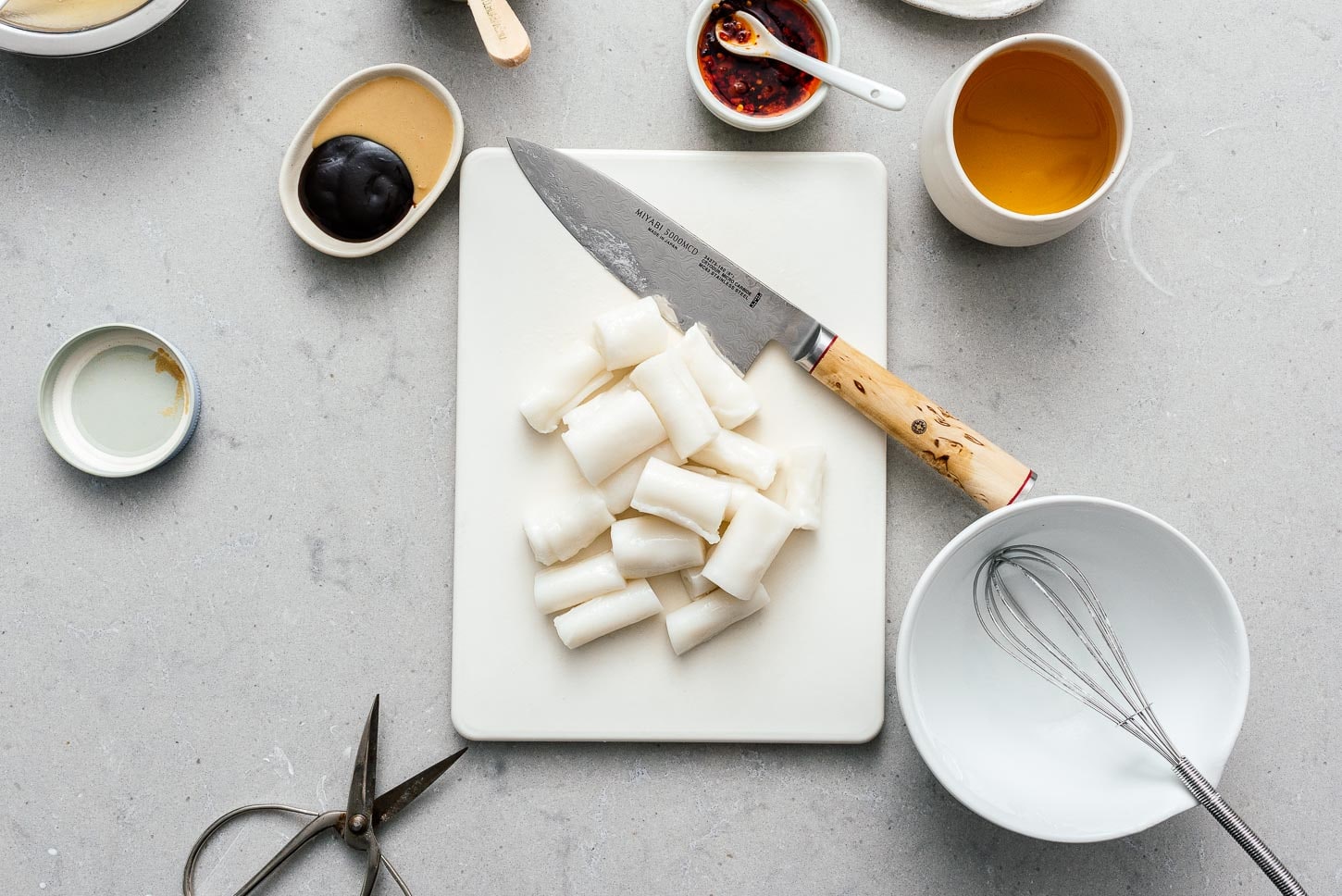
Do I need a special rice roll maker?
No, absolutely not. You can use a tray or a plate and a wide rimmed sauté pan with a lid. I bought a special rice roll maker because (if you can’t tell) I’m a little obsessed with rice rolls. But you can totally make them with just a rack and a regular wide sauté pan. Even better if you have a wok! All you need is a steamer rack and a small non-stick square baking pan that fits inside. That said, in these photos is the single drawer version of this cheung fun maker and it does make life easier.

How to store cheung fun
If you don’t finish your rice noodle rolls, wrap them up and place them in the fridge, they’ll keep for 2-3 days. They’ll harden up but you can warm them in the microwave or steam them.
How to eat cheung fun
You can eat them fresh, as is, doused in your favorite sauce. I like drizzling on a mix of hoisin sauce, soy sauce, chili oil, and sesame paste. It’s a flavor explosion of sweet and savory, spicy and nutty.
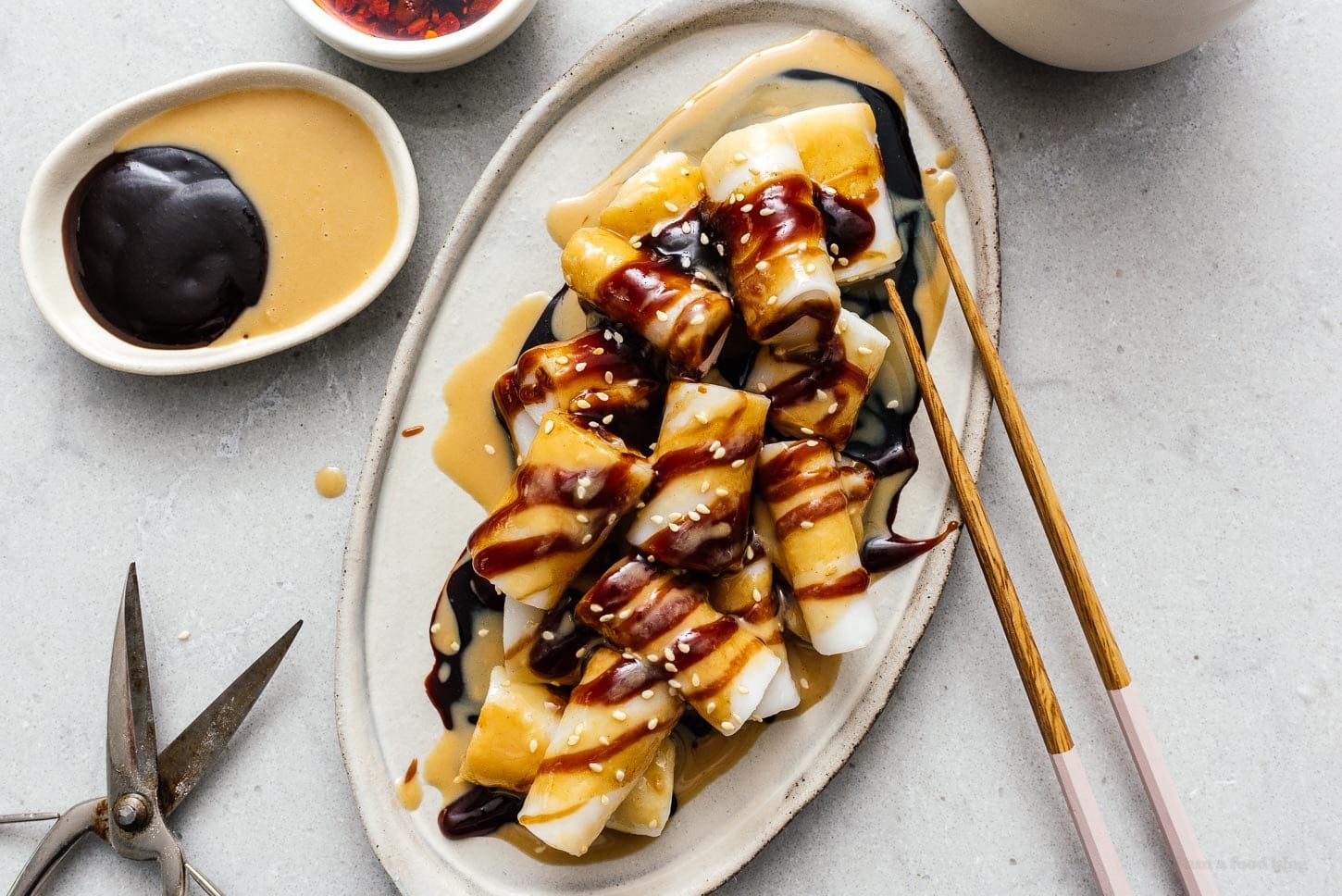
How to make fresh ho fun
Simply cut the rice noodle rolls into noodle width, then gently shake them out. Boom, fresh ho fun rice noodles for all your beef chow fun needs!
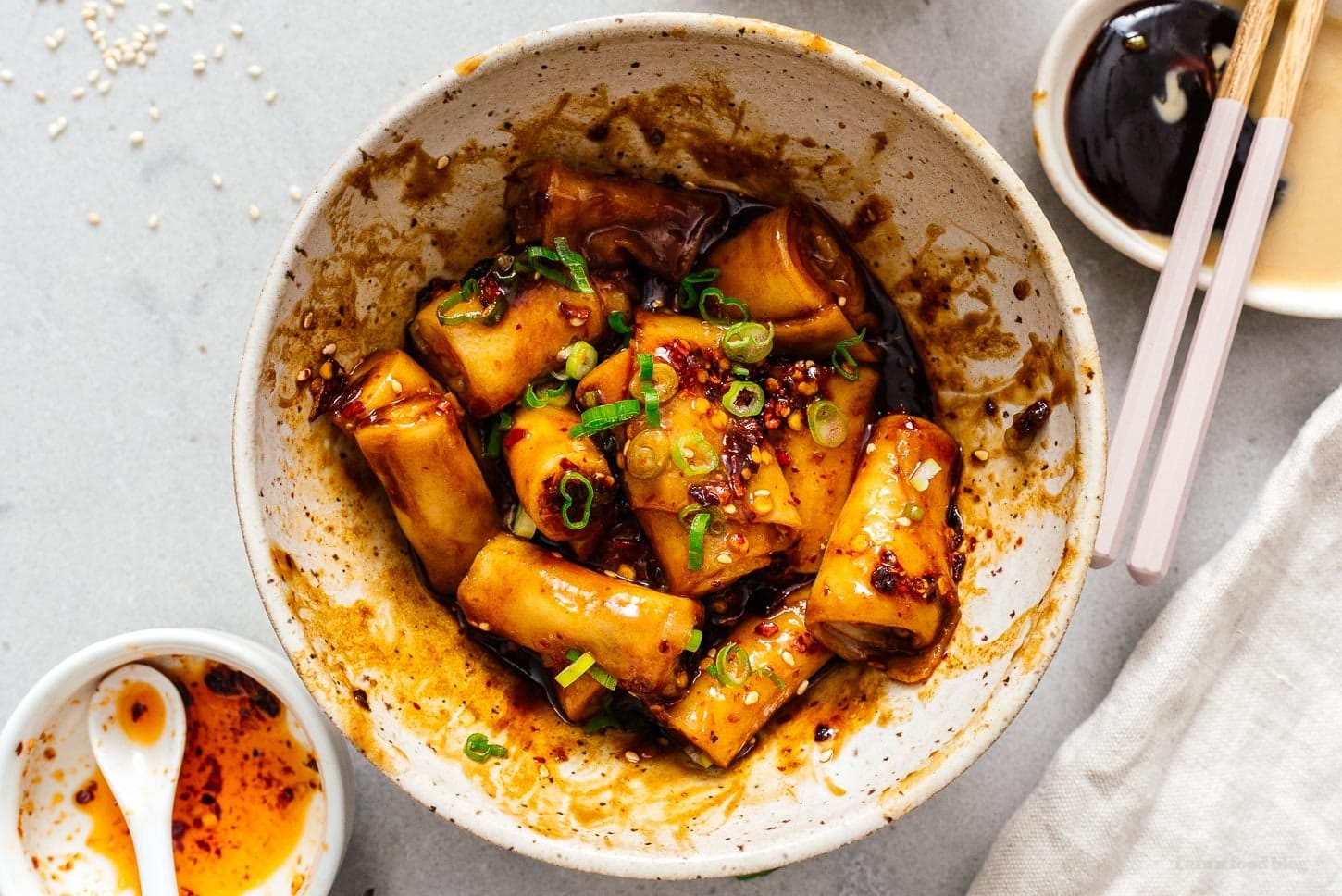
I hope you give this recipe a try! It’s a time investment, but there’s something so special about making your own rice noodle rolls at home. Next time you’re craving dim sum and can’t make it out, this recipe will be there for you. Plus, I know once you try it, you’ll be addicted. There’s nothing better than fresh rice noodles made right at home.
fresh noodles forever,
xoxo steph
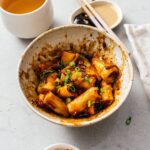

Cheung Fun Rice Noodle Rolls
#wprm-recipe-user-rating-0 .wprm-rating-star.wprm-rating-star-full svg * { fill: #f5a623; }#wprm-recipe-user-rating-0 .wprm-rating-star.wprm-rating-star-33 svg * { fill: url(#wprm-recipe-user-rating-0-33); }#wprm-recipe-user-rating-0 .wprm-rating-star.wprm-rating-star-50 svg * { fill: url(#wprm-recipe-user-rating-0-50); }#wprm-recipe-user-rating-0 .wprm-rating-star.wprm-rating-star-66 svg * { fill: url(#wprm-recipe-user-rating-0-66); }linearGradient#wprm-recipe-user-rating-0-33 stop { stop-color: #f5a623; }linearGradient#wprm-recipe-user-rating-0-50 stop { stop-color: #f5a623; }linearGradient#wprm-recipe-user-rating-0-66 stop { stop-color: #f5a623; }
Ingredients
- 1 cup rice flour 140g, see notes
- 1.5 tbsp cornstarch 13g
- 1/4 tsp salt
- 2 cups water
- 1 tsp neutral oil eg, canola
- soy sauce optional
- hoisin sauce optional
- green onions sliced, optional
- toasted sesame seeds optional
- sesame paste optional
- chili oil optional
Instructions
-
In a bowl or large liquid measuring cup, whisk together the rice flour, cornstarch, salt, water, and oil.
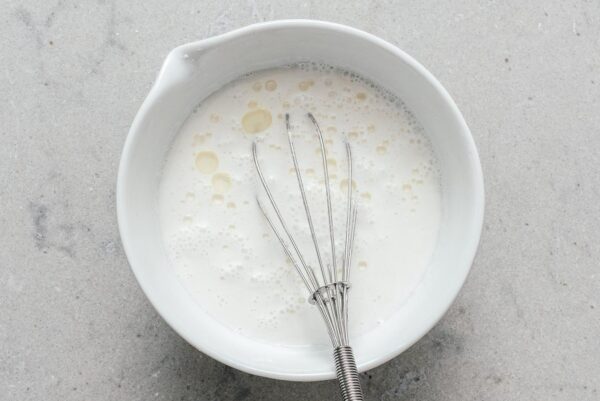
-
Bring 1-2 inches of water up to a boil in wok or large sauté pan and place a steaming rack in the center of the wok. Lightly brush a non-stick square pan or ceramic plate (that comfortably fits inside the wok) with oil.

-
Give the batter a whisk then add 1/4 cup batter to the pan. Shake the pan to distribute the batter evenly then place on the rack, cover, and steam for 3-4 minutes, or until the rice noodle bubbles up.

-
Using oven mitts, carefully lift off the lid and remove the entire pan with the rice noodle from the wok. Brush with oil and let cool slightly, as the noodle sheet cools, it will firm up slightly.
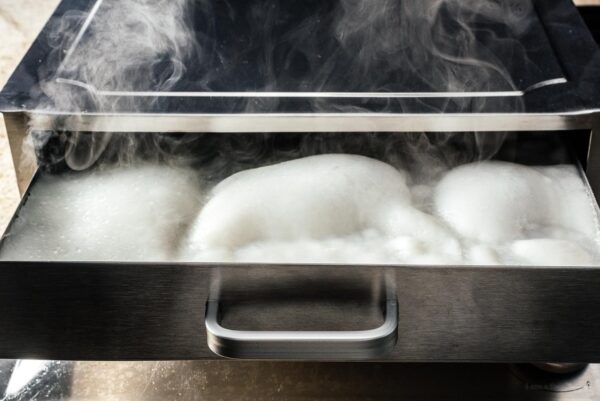
-
Use an offset spatula or a scraper to release the edges of the rice noodle sheet. Use the scraper to roll it up into a log and set aside, covered. Continue to cook the rest of the batter, stirring the batter before you steam each noodle.
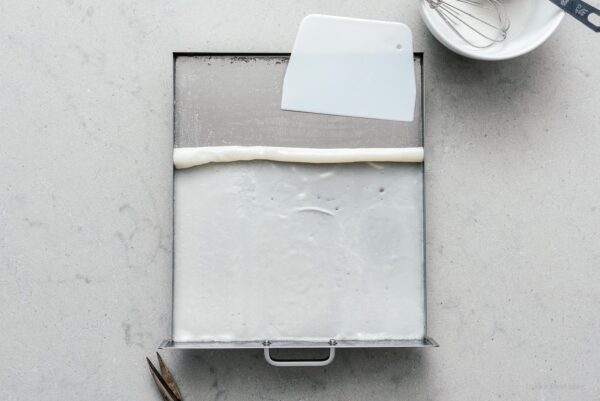
-
Cut the rolled up rice noodles into 2 inch lengths. Serve drizzled with soy sauce, hoisin sauce, scallions, toasted sesame seeds, sesame paste, and chili oil.
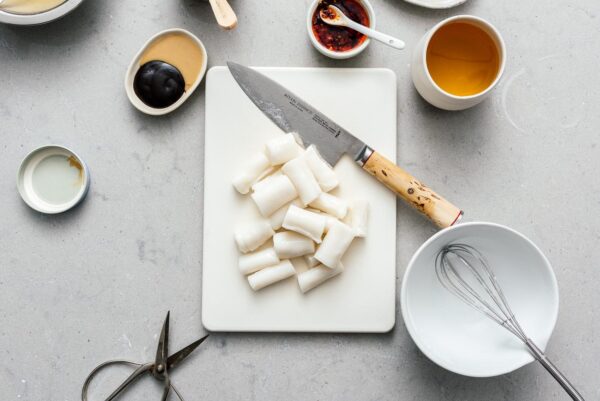
Notes
Very tender, soft rolls:
1 cup rice flour 140 g
1.5 tbsp tapioca starch 13.5 grams
Somewhere in the middle, not as chewy rolls:
1 cup rice flour 140 g
1 tbsp cornstarch 7.5 g
1 tbsp tapioca starch 9 grams
Estimated Nutrition
Calories from Fat 30

